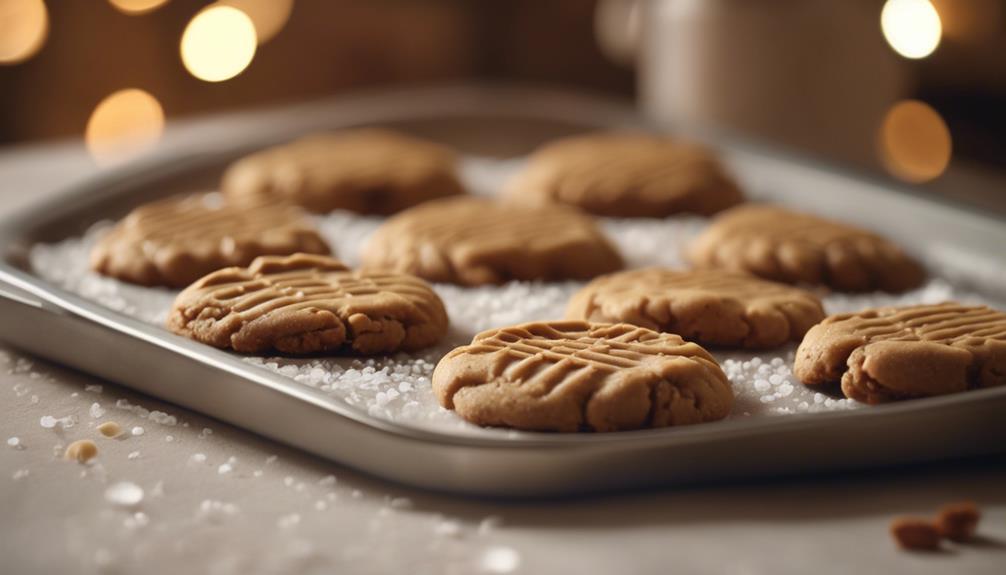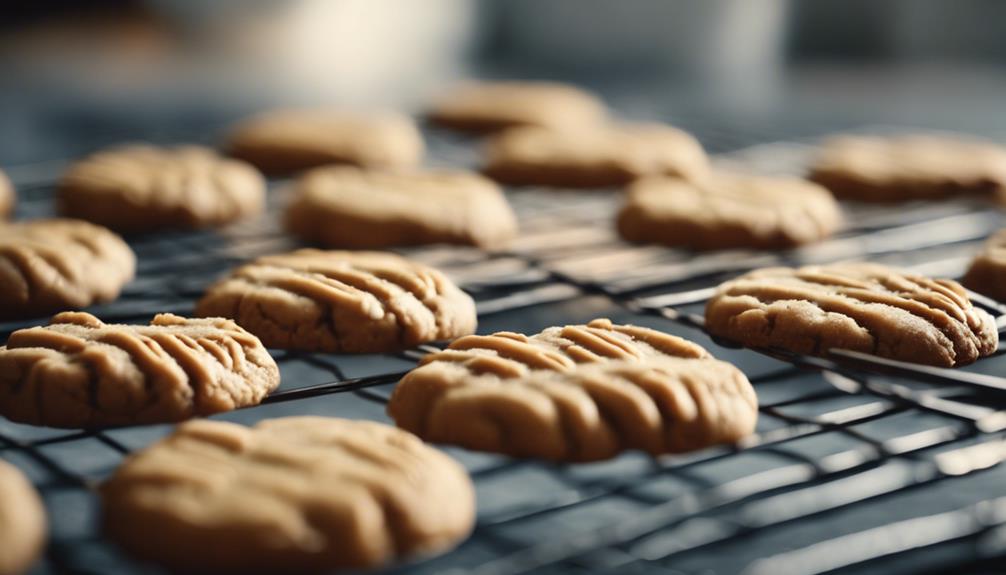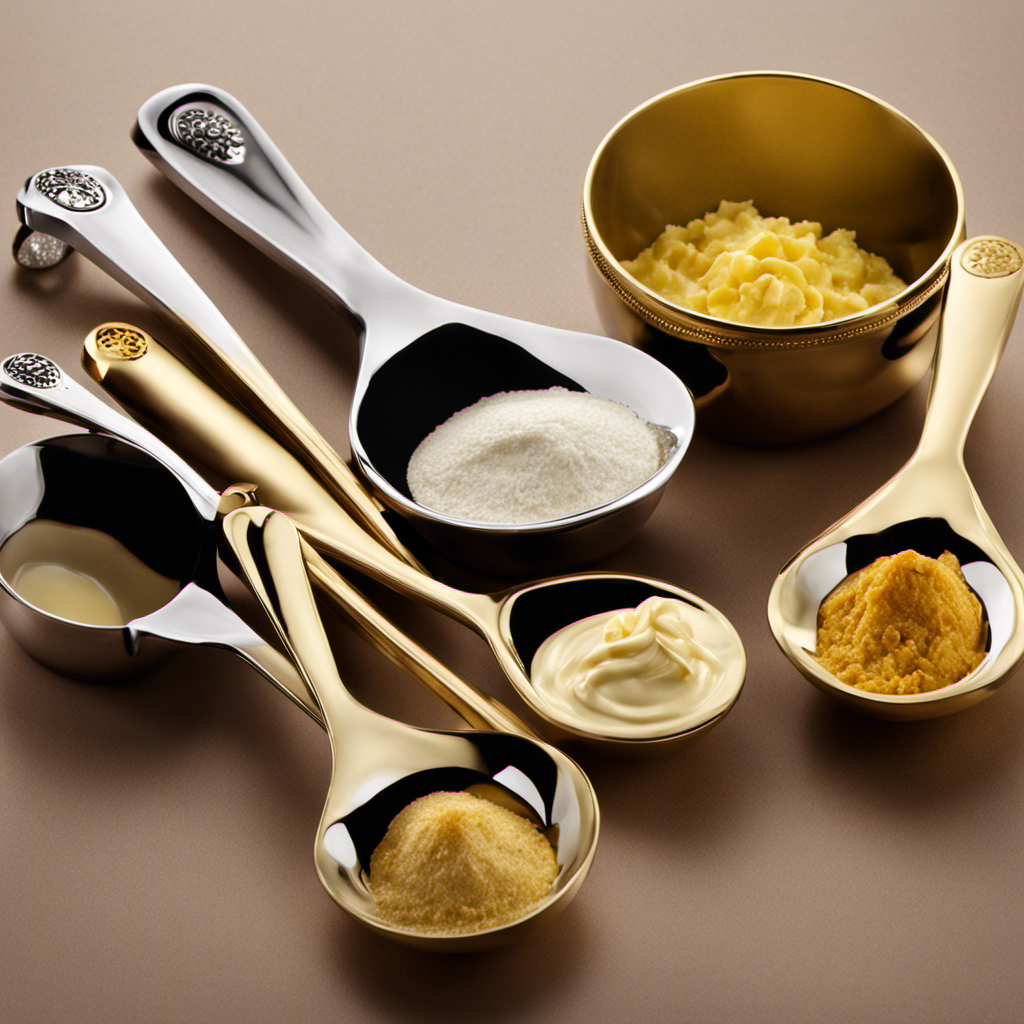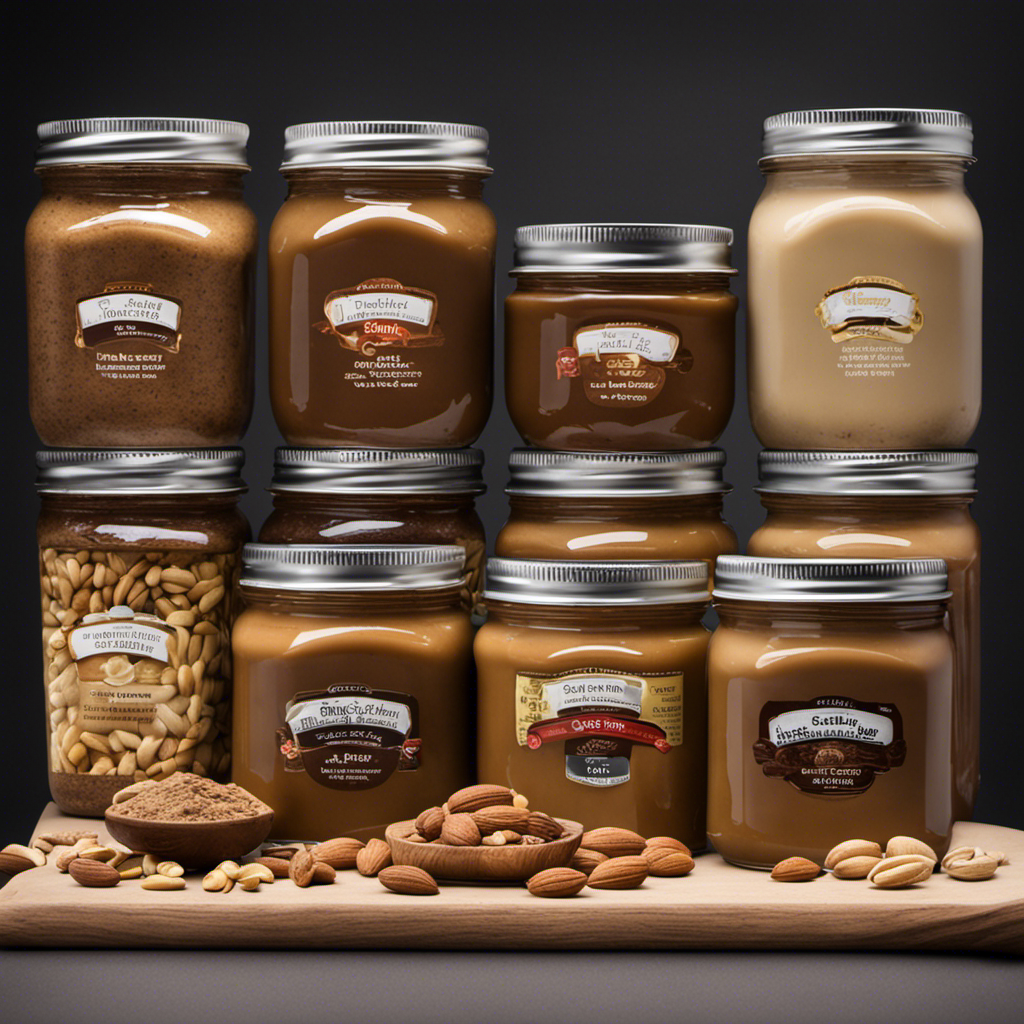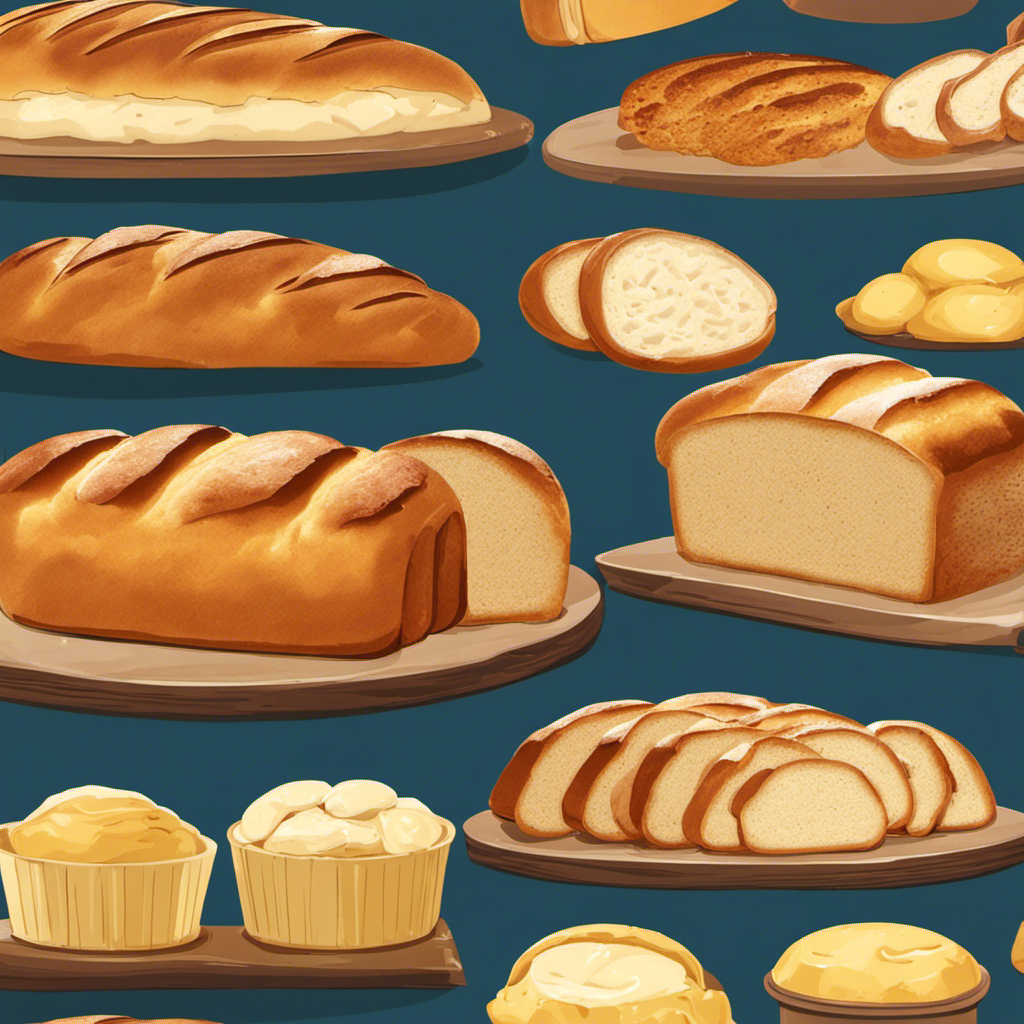Get ready to enjoy the best soft peanut butter cookies! Preheat to 350°F. Mix margarine, peanut butter, sugars, egg, and vanilla. Add flour, baking soda, and salt. Chill dough for 15 mins. Roll into balls and bake. Store dough up to 72 hours. Freeze cookies for 3 months. Experiment with ingredients for your twist. Increase peanut butter for more zest. Chill for chewier cookies. Adjust baking for perfect texture. Try this recipe for a melt-in-your-mouth experience. Keep going to explore more variations, tips, and feedback for your next baking adventure!
Key Takeaways
- Soft and chewy texture achieved by chilling dough.
- Rich peanut butter flavor enhanced by increasing the amount.
- Simple recipe with common pantry ingredients.
- Freezable for future enjoyment and convenience.
- Melt-in-your-mouth deliciousness perfect for any occasion.
Recipe Ingredients and Preparation
To make the best soft peanut butter cookies, start by preheating your oven to 350 degrees F for baking.
In a mixing bowl, combine margarine, peanut butter, white sugar, brown sugar, egg, and vanilla extract. Beat the mixture until it becomes fluffy.
Next, mix in the flour, baking soda, and a pinch of salt to form the dough. It's vital to chill the dough for about 15 minutes to make it easier to work with.
After chilling, roll the dough into walnut-sized balls. Place them on a baking sheet, leaving space between each cookie.
Bake the cookies in the preheated oven until they're lightly browned. This process will give you those soft and chewy peanut butter cookies that everyone loves.
Storage and Freezing
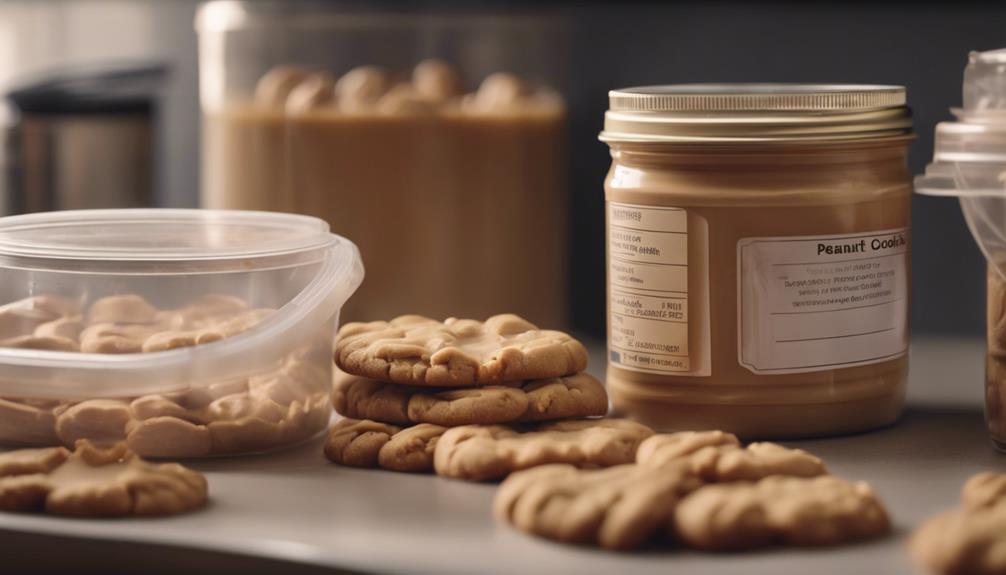
When it comes to storing your soft peanut butter cookies, follow these guidelines to keep them fresh and delicious.
Chill the cookie dough for up to 72 hours to enhance flavors, while storing baked cookies in an airtight container for up to 3 days.
To extend their shelf life, freeze the cookies for up to 3 months or freeze cookie dough balls for later baking convenience.
Storage Guidelines
Properly store your cooled soft peanut butter cookies in an airtight container to maintain their softness. Storing these delightful treats in an airtight container helps in preserving their texture and flavor, ensuring they stay soft and yummy for longer periods. If you want to freeze baked cookies, placing them in an airtight container can extend their shelf life for up to 3 months without compromising taste or softness.
Chilling your peanut butter cookie dough for up to 72 hours before baking can greatly enhance the texture and flavor of the cookies once they're baked. To keep your cookies soft and fresh, consider adding a slice of bread to the container; the bread will help absorb excess moisture, preventing the cookies from becoming too dry or hard.
Freezing Recommendations
For best storage and long-term enjoyment of your soft peanut butter cookies, consider freezing them following these recommendations.
- Chill Your Cookie Dough: Before baking, chill your cookie dough for up to 72 hours to enhance both the flavor and texture of your cookies.
- Store Baked Cookies: After baking, store your cookies in an airtight container for up to 3 days to maintain their freshness.
- Freeze Baked Cookies: To enjoy your cookies later, freeze baked cookies for up to 3 months for long-term storage. Make sure they're well wrapped to prevent freezer burn.
- Freeze Cookie Dough Balls: Freeze cookie dough balls for up to 3 months to have convenient ready-to-bake treats on hand whenever a craving strikes. Consider doubling the recipe so you can enjoy freshly baked cookies more often in the future.
Recipe Variations and Baking Tips

Consider experimenting with additional ingredients and baking techniques to customize the flavor and texture of your soft peanut butter cookies. To enhance the flavor, try adding ingredients like vanilla extract, milk, or peanut butter chips. These additions can give your cookies a unique twist and make them even more delicious. If you prefer a stronger peanut butter taste, consider increasing the amount of peanut butter in the recipe.
For a chewier texture, make sure to chill the dough properly before baking. This step can significantly impact the final outcome of your cookies, making them softer and more enjoyable to bite into. Additionally, adjusting baking time, temperature, and techniques can also influence the chewiness of your cookies.
If you're looking to experiment further, try substituting baking powder with vinegar and baking soda as an alternative in the recipe. This substitution can provide a different kind of lift to your cookies, altering their texture slightly while maintaining their softness.
Enjoy getting creative with these recipe variations and baking tips to perfect your soft peanut butter cookies.
Positive Feedback and Enjoyment
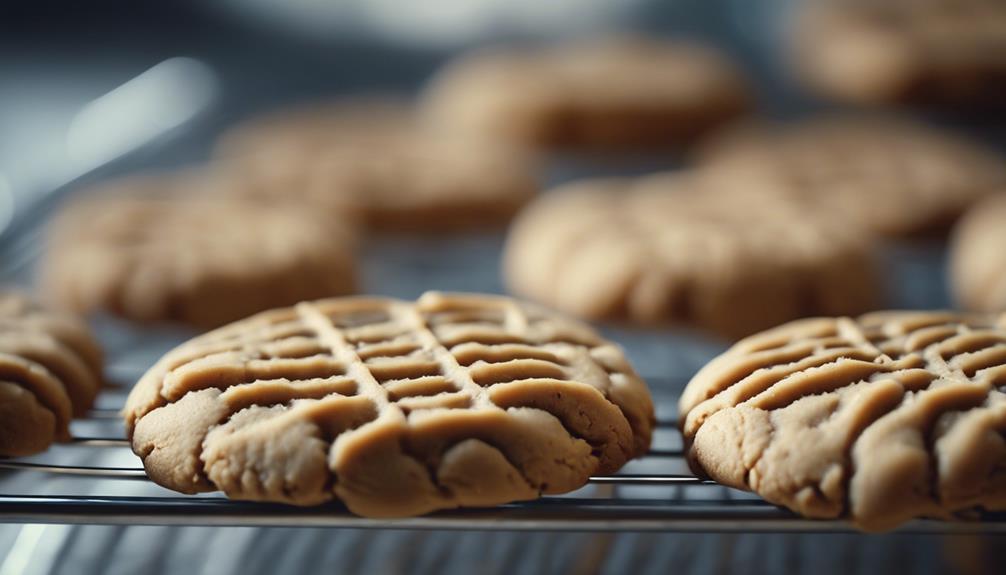
Users have raved about the soft, chewy, and delicious nature of these peanut butter cookies, making them a beloved recipe for many. The positive feedback and enjoyment surrounding these cookies have been remarkable, with comments highlighting their melt-in-your-mouth texture and being deemed the best peanut butter cookies ever made.
These cookies have been enjoyed with ice cream, becoming a go-to dessert for parties, gatherings, and various occasions, earning love from both family and friends. The taste and texture of this recipe have received high praise, making it a popular choice for bake sales and sweet cravings.
Additionally, users have appreciated the no-fail scaling options provided by the recipe, allowing for easy adjustments to yield a large quantity of these delectable cookies.
Recipe Inquiries and Community Engagement

Let's chat about any recipe questions or ingredient concerns you may have while baking these soft peanut butter cookies.
Share any queries about specific measurements, sugar substitutes, or rolling the dough for better results.
Engage with the community to get feedback, tips, and troubleshoot any issues together.
Recipe Clarifications
Need help with the Best Soft Peanut Butter Cookie recipe? Here are some common recipe clarifications that might address your concerns:
- Recipe Feedback: Share your experience with the peanut butter cookies recipe and engage with the community.
- Rolling Cookie Dough: Seek guidance on the proper technique for rolling cookie dough into perfect balls.
- Sugar Substitutes: Inquire about suitable sugar substitutes for diabetics or those looking to reduce sugar intake.
- Baking Issues: Troubleshoot common problems like cookie cracking, thin batter consistency, or any other baking issues you encounter.
Engaging with other recipe followers can provide valuable insights and tips to enhance your baking experience. Share your feedback, ask questions, and don't hesitate to seek clarifications on any aspect of the recipe. Remember, the chef values your input and appreciates your participation in the recipe community.
Ingredient Queries
Explore different ingredient inquiries and recipe questions within the Best Soft Peanut Butter Cookie recipe to enhance your baking experience and connect with the recipe community.
When considering butter options, whether salted or unsalted, or exploring the use of vegan butter sticks, understanding how these choices can impact the cookie's texture and flavor is crucial.
Substituting ingredients like natural peanut butter for a richer taste or adding peanut butter chips for extra indulgence can elevate your cookies.
Experimenting with almond extract instead of vanilla, sprinkling sea salt on top for a delightful contrast, or even incorporating jam can add unique twists to the classic recipe.
Engaging with the community allows for recipe sharing, feedback, and clarifications on steps.
Questions on ingredient measurements, sugar substitutes for dietary restrictions, and techniques like rolling cookie dough for optimal shape can further enrich your baking journey and foster a sense of belonging within the recipe community.
Recipe Features and Collaborative Event
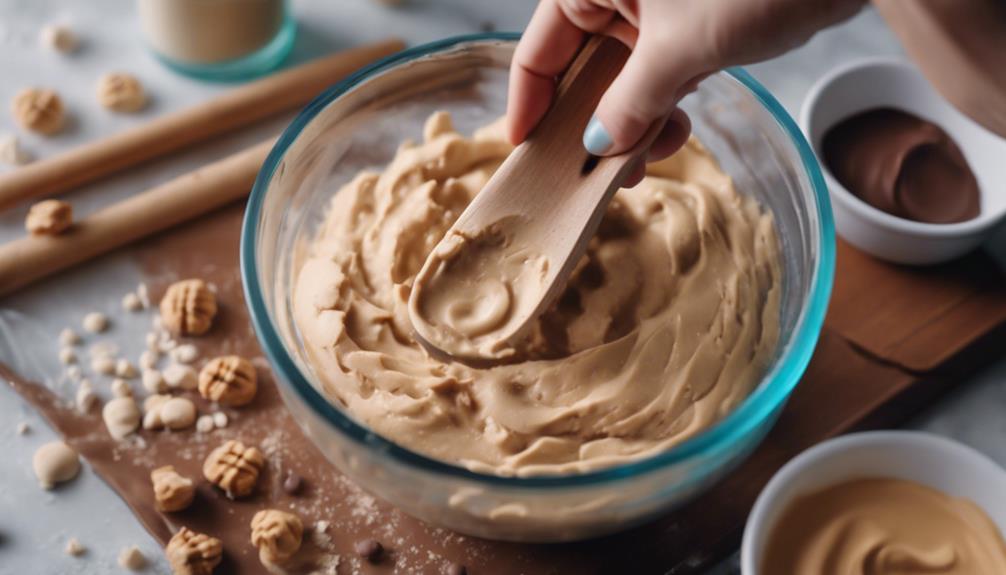
During the collaborative event organized by Michaela from An Affair From the Heart, food bloggers came together to put a unique twist on traditional peanut butter cookies for the Freaky Friday Blog Hop.
The recipe introduced by Author Julie Menghini brought a creative touch to the baking community, resulting in a delightful and easy-to-make treat.
Here are some key features of this collaborative peanut butter cookie recipe:
- Soft and Chewy Goodness: Enjoy cookies that are perfectly soft and chewy, providing a delightful texture with every bite.
- Freezable Convenience: Make a batch to enjoy now and freeze some for later, allowing you to have delicious cookies at your fingertips whenever you desire.
- Simple Recipe: With common ingredients like creamy peanut butter, unsalted butter, sugars, and vanilla extract, this recipe is straightforward and suitable for all baking skill levels.
- Collaborative Creativity: Experience the innovative twist on traditional peanut butter cookies that emerged from the collaborative efforts of passionate food bloggers during this special event.
Ingredients and Equipment
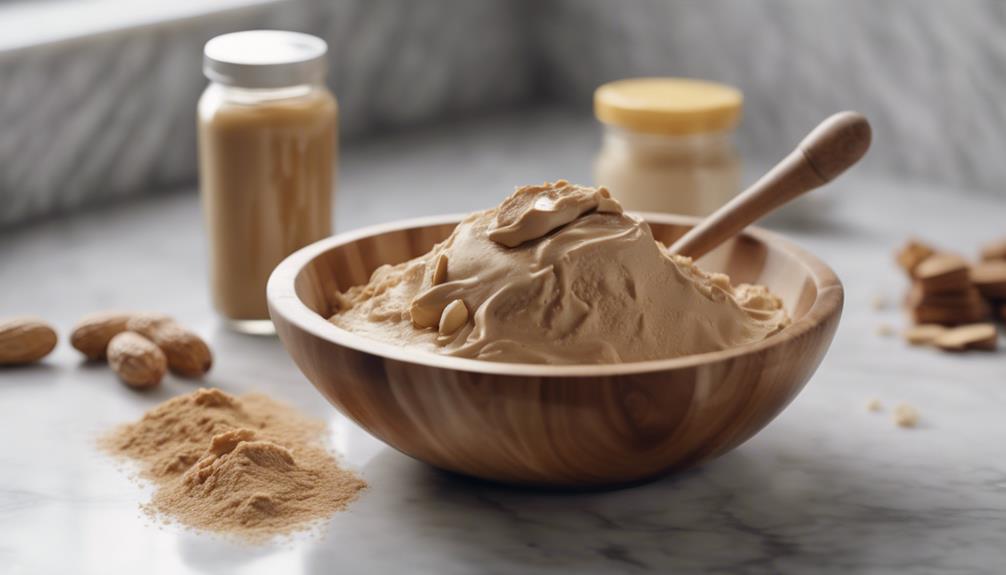
After learning about the collaborative creativity behind the Best Soft Peanut Butter Cookie Recipe, let's now focus on the necessary ingredients and equipment for baking these delectable treats.
To make these soft and yummy cookies, you'll need creamy peanut butter, unsalted butter, brown sugar, white sugar, eggs, vanilla extract, flour, baking soda, baking powder, and a pinch of salt. These ingredients come together to create the perfect balance of flavors and textures in each bite.
In terms of equipment, you'll require baking sheets lined with parchment paper for easy cleanup, scoops to guarantee consistent cookie sizes for even baking, and an electric stand mixer to efficiently mix the ingredients.
The recipe yields up to 42 cookies per batch, making it ideal for gatherings or events where you need to feed a crowd. Additionally, these cookies are freezable, allowing you to store them for future consumption and conveniently serve them whenever needed.
With a simple and straightforward recipe, you can easily whip up these beloved soft peanut butter cookies that everyone will enjoy.
Frequently Asked Questions
What Is the Trick to Making Soft Cookies?
To make soft cookies, chill the dough, use more brown sugar, add an extra egg yolk, cream butter and sugar well, and bake at a lower temperature. These methods help solidify fat, retain moisture, and create a fluffy texture.
What Makes a Cookie Soft Instead of Hard?
To keep cookies soft instead of hard, mix in ingredients like brown sugar and butter for moisture. Watch the baking time; remove them before they turn hard. Let them cool on the sheet, then store in an airtight container.
How Do You Make Cookies Soft and Chewy Vs Hard and Crisp?
For soft and chewy cookies instead of hard and crisp ones, use ingredients like brown sugar and butter, slightly underbake them, and store them with a slice of bread in an airtight container.
How to Make Peanut Butter Soft?
To make peanut butter soft, it's like coaxing a shy sun out from behind the clouds. Warm it gently, mix it well, and let it relax. Soon, it'll be as soft as a whispered secret.
Conclusion
To sum up, this soft and yummy peanut butter cookie recipe is sure to satisfy your sweet tooth cravings.
With simple ingredients and easy preparation, you can whip up a batch in no time.
So go ahead, indulge in these delectable treats and enjoy the comforting flavor of peanut butter in every bite.
Happy baking!
